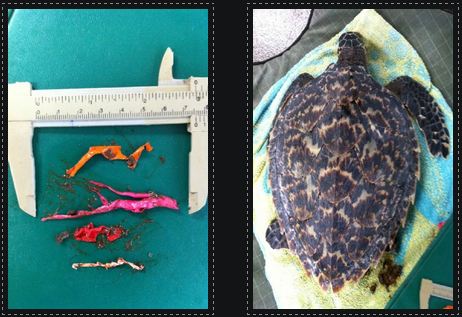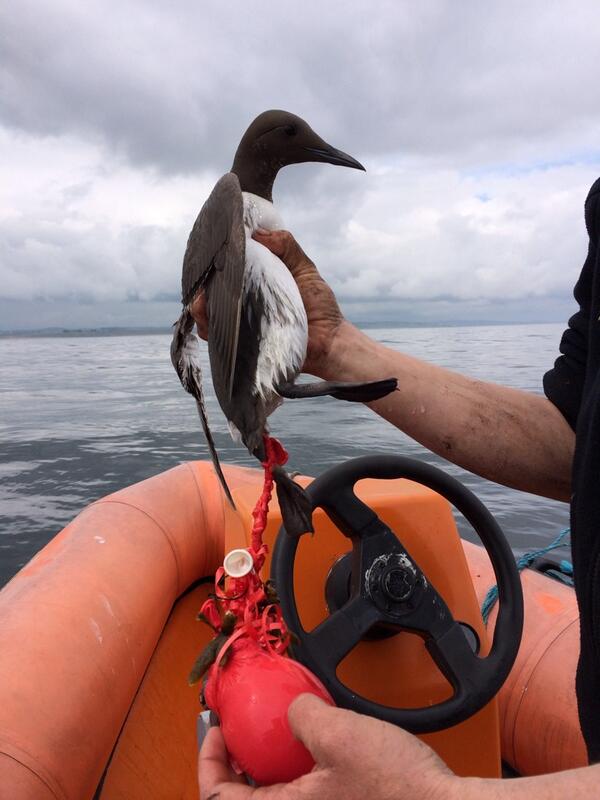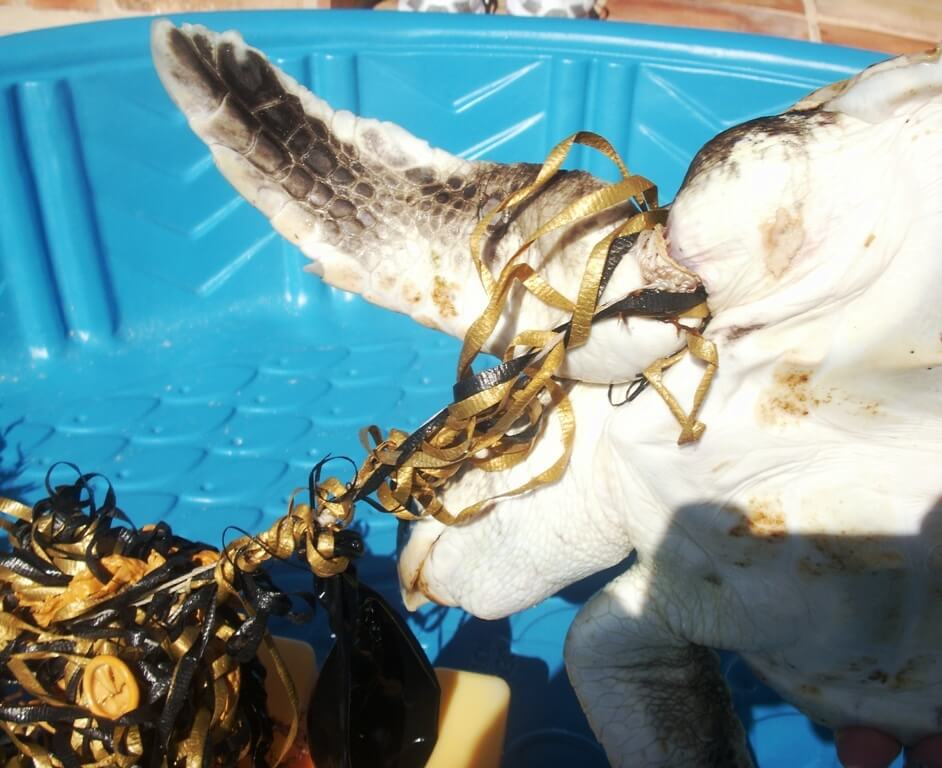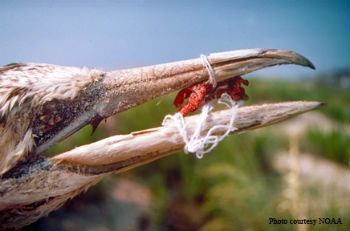Why Balloons are a Blow to our Environment #SeyNoToBalloons
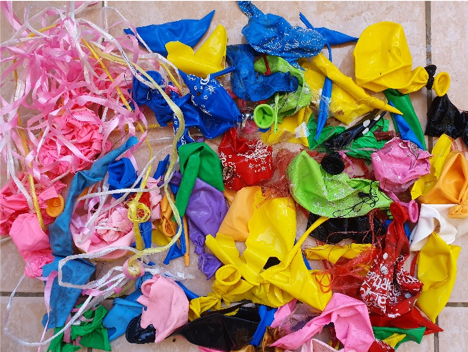
We kicked off the new year with the launch of a new campaign targeting the use of balloons in Seychelles. Founded in 2016, our organisation has become a leading advocate for the protection of the environment in Seychelles. Our overarching mission is to protect our ocean through education, action and research and the launch of our new #SeyNoToBalloons campaign marks the latest step towards achieving that goal.
The purpose of this campaign is to raise awareness about the negative impacts of balloons on the environment and to highlight eco-friendly alternatives. We hope to ultimately see an end to the use of balloons in Seychelles.
Though we have grown accustomed as a society to seeing balloons as synonymous with celebration, there is a sinister side to this party staple. Balloons pose a significant threat to marine life, particularly turtles and seabirds which often mistake them for their favourite prey, jellyfish and squid. In fact, studies into the impacts of plastic pollution and common debris items on the health of the marine environment have shown that soft plastics like balloons carry a greater risk of mortality compared to hard plastics when ingested by these animals as balloons tend to get lodged in digestive tracts leading to choking and starvation. Equally shocking is the conclusion that entanglement by balloons and the ribbons we attach to them emerges as the greatest threat to seabirds, turtles and marine mammals, alongside entanglement by fishing gear and plastic bags.
Two of the most common types of balloons on the market are made from either mylar or latex. While the former is completely non-biodegradable, companies often market latex balloons as being biodegradable and therefore eco-friendly. However, such claims can be misleading as if the balloon finds its way to water, as it is likely to do on an island, a latex balloon can take anywhere between 6 months to 4 years to actually decompose – giving them plenty of time to wreak havoc on the environment. Despite its natural origin, latex rubber does not degrade quickly enough for ingestion by marine life to be avoided. That is why we as consumers need to be wary that ‘biodegradable’ does not mean ‘harmless’.
Despite the naturally stunning beauty of our surroundings – our beaches offer world-renowned vistas – the use of balloons is widespread in Seychelles. Balloons are the go-to decorating item at children’s birthday parties, beach picnics,office events, and even celebrations hosted by governmental agencies and Ministries. Unfortunately, there is a worrying trend for balloons to be left behind on beaches once the party is over.
We are all too familiar with the sight of popular beaches like Au Cap, Anse Royale and Beau Vallon adorned with balloons tied with ribbons to trees and vegetation. And we are all equally familiar with the unsightly litter left behind by the celebrations the next day. The sad reality is that more often than not these balloons and ribbons along with the inherent risks of entanglement and choking that they pose to our wildlife, are left behind to be either taken by the tides or blown away by the wind into the ocean.
As our Project Manager, Kristina Gurova, says, “Seychelles is home to so many species of birds, turtles, and many other unique and endangered forms of marine life. We should be taking concrete measures to prevent balloons from entering our fragile ecosystems in order to safeguard our biodiversity.”
There are many available alternatives to balloons such as paper lanterns, kites and bunting. These alternatives are not only better for the environment, but they are also better for consumers’ pockets as they can be enjoyed again and again.
The Ocean Project joins an increasing number of environmental organisations worldwide campaigning for partial or complete bans on balloons. A number of US States and other territories like Gibraltar have already passed or are considering laws banning the release of helium balloons. The town of New Shoreham in Rhode Island has taken a bolder approach, by enacting a law which outlaws the sale, use and distribution of any type of balloon. Taking a similar step here in Seychelles would help establish our country as a regional and even global leader in the environmental movement.
Seychelles received a lot of positive global coverage in relation to the creation of two new Marine Protected Areas roughly the size of Great Britain in 2018, and rightly so. We must now work to ensure that these MPAs are indeed a sanctuary to the many unique species of marine life that inhabit our waters. This is why campaigns like our new #SeyNoToBalloons campaign matter. We hope more Seychellois will join us in saying no to balloons in 2020.
As part of our efforts to get this vital message across, we are currently working to attract venues and businesses around the country to join our campaign by making the commitment to stopping the use of balloons in their events decoration and switching to eco-friendly alternatives. Already, businesses such as The Boardwalk Bar and Grill, Maison Marengo, Les Lauriers Eco Hotel and Restaurant, Oscars Beach Bar and Grill, and Seyscapes Yacht Charter have stepped up to the plate and endorsed the campaign. Our desire is to see more businesses taking this pledge in the coming weeks and months, and using their platforms in a way that benefits our environment, and by extension us as a society.
We are mindful that change can sometimes be daunting and that effective environmental protection requires collective action and commitment. We hope that individuals will also join us so that we can band together for the protection of our little slice of paradise and enjoy it for generations to come. Whether you are a business or an individual, please get in touch with us through theoceanproject.sey@gmail.com to find out more about how you can get involved.
Photo source:
Photo 1: Australia Seabird Rescue
Photo 2: David Steely, Farne Islands National Trust, UK
Photo 3: Florida Fish Wildlife Conservation Commission
Photo 4: NOAA
